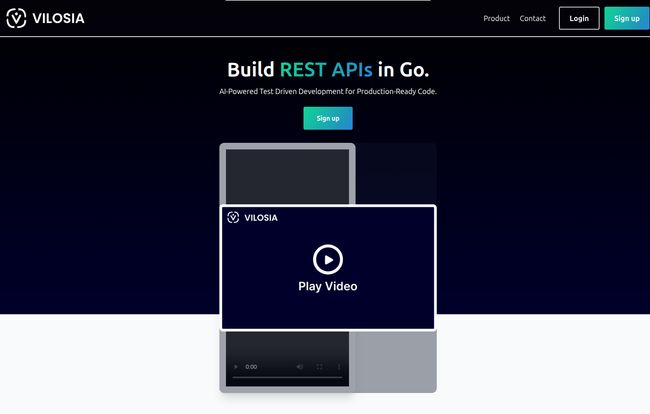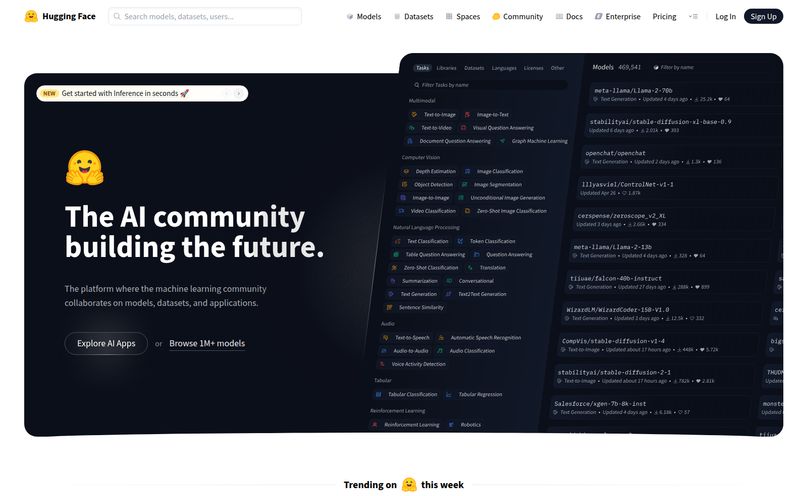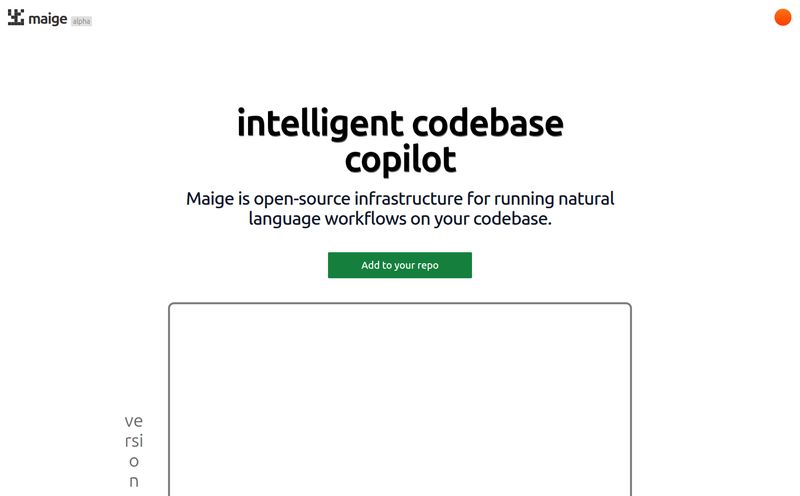Let’s have a little chat. You and me. If you’ve been in the software development world for more than, oh, a week, you know the beast I’m talking about. It lurks in the dark corners of every established company. It’s the legacy codebase.
It’s that monolithic giant, built a decade ago in a language no one on the team wants to touch, with dependencies so tangled they look like a bowl of spaghetti that’s been through a blender. Migrating it feels less like a project and more like an archaeological dig where one wrong move could bring the whole temple crashing down. We’ve all been there, staring into the abyss of technical debt and wondering if it’s easier to just quit and become a goat farmer.
So, whenever a new tool pops up promising to slay this particular dragon, my ears perk up. I get a little tingle of excitement mixed with a whole lot of skepticism. Enter Vilosia. The name on the tin says it uses Gen AI to help migrate these old systems. A bold claim. Let’s see if it holds any water.
So, What's Vilosia Actually Trying to Do?
Okay, cutting through the marketing fluff. Vilosia isn't selling a magic wand. Thank goodness. What it appears to be is a highly specialized tool aimed squarely at a very expensive problem for medium-to-large companies: getting off their old, creaky software and onto something modern. Specifically, it seems geared towards moving to a microservices architecture using Go.
The core idea, as I see it, is to help you build new, clean REST APIs that can start to chip away at the functionality of your old monolith. Instead of trying to refactor the entire beast at once (a task doomed to fail, in my experience), you build new services around it, slowly strangling the old one. This is a pattern known as the Strangler Fig Application, a concept the great Martin Fowler has written about extensively. Vilosia seems designed to be the ultimate tool for that exact strategy.
It does this by first helping you understand the mess you’re in. It analyzes your legacy code, maps out how data flows through it, identifies database calls, and sniffs out external API connections. Just that part alone is a huge win. It’s like getting a CT scan of your patient before you start surgery.
A Peek Under the Hood: The Vilosia Workflow
From their site, the process looks refreshingly straightforward. It’s broken down into a few key steps that any dev can understand.
Step 1: Just Tell It What You Want
It starts with natural language. You literally describe the API endpoint you want to build. Something like, "Create a POST endpoint at /users to add a new user with a name, email, and password." This is the kind of human-centric interface we’re seeing more of with tools like GitHub Copilot, and I’m all for it. It reduces the initial boilerplate and lets you focus on the logic.
Step 2: AI-Powered Test-Driven Development
Now this is the part that really got my attention. Vilosia takes your description and doesn't just jump to code. It generates test cases first. This is a huge nod to Test-Driven Development (TDD), a methodology that a lot of top-tier engineering teams live by. The idea is simple: define what “success” looks like before you write the code to achieve it. By generating test cases—including edge cases and potential failure points—the platform sets a high bar for code quality from the get-go.

Visit Vilosia
Step 3 & 4: Generate, Export, and Own
Once you’ve reviewed and accepted the test cases, Vilosia generates the actual code to satisfy them. And here's the crucial detail: it’s in Go. A fantastic choice for high-performance, concurrent microservices. After the code is generated, it’s not locked away in some proprietary system. You can export the entire repository, clone it into your favorite IDE (hello, VS Code), and get to work adding the specific business logic that only a human can provide. It writes the skeleton, you provide the soul. That's a partnership I can get behind.
The Good, The Bad, and The Codebase
No tool is perfect, right? I’ve been doing this long enough to know there are always trade-offs. So let’s have an honest look at where Vilosia likely shines and where you might hit a snag.
The Bright Side
The biggest advantage is clarity. The ability to automatically add event triggers and visualize data flow in a legacy system is like turning on the lights in a dark, cluttered basement. You can finally see where everything is. This simplification of the migration process can't be understated. The AI-powered TDD is another massive plus. It forces a best-practice approach that can seriously improve the reliability of the new services you're building. It’s like having a very persnickety, very fast senior engineer doing your code reviews.
The Potential Hurdles
Let's be real. First, this tool is building APIs in Go. If your team is a Java or a C# shop with zero Go experience, there's going to be a learning curve. That’s not a deal-breaker, but it’s a consideration. Second, while AI-generated test cases are a fantastic starting point, you can't just blindly trust them. A human developer still needs to review them to make sure they align with the actual business requirements. The AI is a brilliant intern, not a replacement for your lead architect. Finally, and this is the big one, the old adage of "garbage in, garbage out" applies. Vilosia’s ability to analyze a legacy system is directly tied to how coherent that system is. If your codebase is an undocumented, chaotic mess, the AI is going to struggle. It’s a powerful tool, not a miracle worker.
So Who Is This Actually For?
Vilosia is clearly not for the solo developer building a new app from scratch. This is an enterprise-grade solution for a specific, painful problem. I see this being a perfect fit for a team at a medium or large company that has a big, scary monolith they need to modernize. They've probably already decided that a Go-based microservices architecture is their target, and they need a way to accelerate that transition without introducing massive risk.
If you're a small startup, this is probably overkill. But if you’re a technical lead or a CTO losing sleep over a 15-year-old Java application, Vilosia might be the thing you’ve been looking for.
Let's Talk Turkey: What's the Price?
Ah, the million-dollar question. Or, perhaps, the ten-thousand-a-month question. As of writing this, Vilosia’s pricing is… well, a mystery. The website has a prominent “Join the Waitlist” button, which tells me it's either in a closed beta or gearing up for a launch. In a bit of authentic digital sleuthing, I tried going directly to their pricing page and was met with a classic `404 Not Found`.
This isn't a bad thing! It just means they're not ready for the public yet. Given their target audience of medium to large enterprises, I wouldn’t be surprised to see a tiered SaaS model—perhaps based on the number of developers, the size of the codebase analyzed, or the number of APIs generated. It's unlikely to be cheap, but when you compare it to the cost of a failed multi-year migration project, the value proposition could be very strong indeed.
Frequently Asked Questions about Vilosia
1. Is Vilosia a complete replacement for developers?
Absolutely not. Think of it as a powerful assistant or an accelerator. It handles the tedious, boilerplate parts of API development and legacy analysis, freeing up human developers to focus on complex business logic, architecture, and creative problem-solving. It's a tool to make good developers faster, not to replace them.
2. What programming language does Vilosia use?
Currently, all the examples and documentation point to Vilosia generating code for REST APIs in Go (Golang). This is a strategic choice, as Go is incredibly popular for building efficient and scalable microservices.
3. Can Vilosia handle any legacy system?
Its effectiveness will depend on the state of the legacy codebase. It's designed to analyze code, map dependencies, and visualize data flow. However, if a system is exceptionally convoluted or poorly documented, the insights it can generate will be limited. It's a powerful analysis tool, but its success relies on having something understandable to analyze.
4. Is Vilosia available for public use right now?
As of late 2024, Vilosia appears to be in a pre-launch or closed beta phase. The primary call to action on their website is to "Join the Waitlist," which suggests they are onboarding users in a controlled manner before a full public release.
5. How does Vilosia fit into a standard development workflow?
It integrates quite well. You use the Vilosia platform to define, test, and generate the foundational code for your new API. Then, you export the entire project as a standard code repository. From there, you can clone it into your local IDE (like VS Code or GoLand), push it to your own GitHub or GitLab, and integrate it into your existing CI/CD pipelines just like any other service.
My Final Take on Vilosia
I'm cautiously optimistic. The world of software is littered with tools that promised to solve legacy migration and failed. But Vilosia’s approach feels different. It's focused, pragmatic, and built around modern best practices like TDD and a specific, powerful language like Go.
It’s not a magical solution, but it might just be the right-sized, AI-powered lever that teams need to finally move the giant rock of technical debt that’s been blocking their path. I’ll be keeping a close eye on this one, and you can bet I’ve already joined that waitlist. Because if it delivers on even half of its promise, it could be a game-changer for a lot of people.
Reference and Sources
- Vilosia Official Website: https://www.vilosia.com/
- Martin Fowler's article on the StranglerFigApplication: https://martinfowler.com/bliki/StranglerFigApplication.html
- Go Programming Language Official Website: https://go.dev/



